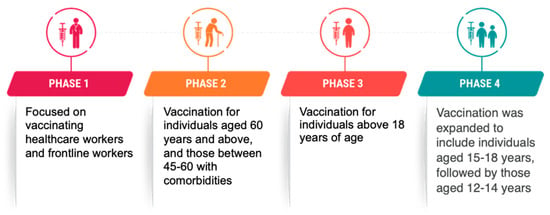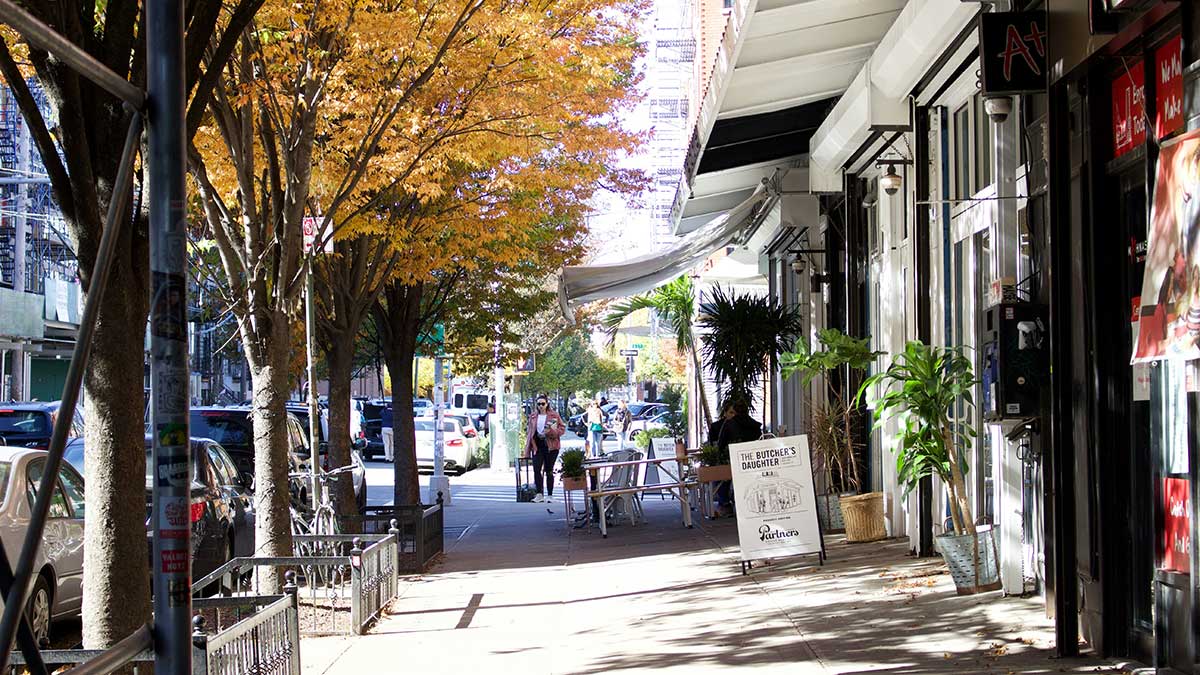1. Introduction
While these initiatives were crucial, there remained a significant need to increase vaccine uptake among migrants, particularly in states like Tamil Nadu and Punjab, where migrant populations have been disproportionately large and have required more tailored outreach mechanisms. To do this, the USAID-funded MOMENTUM Routine Immunization Transformation and Equity (the project) supported the Government of India to develop contextually appropriate local strategies. The project partnered with nongovernmental community-based organizations and provided them with financial and technical resources. (In this paper, project and community-based staff are collectively referred to as “project staff”). In turn, the project collaborated with additional local partners (health and non-health public and private actors) to design and implement program strategies to identify, reach, and vaccinate migrants in Tamil Nadu and Punjab. (These partnerships were not supported financially).
This case study answers the following questions: Who were the project partners and what were the roles of each entity? What strategies did partners implement to increase COVID-19 vaccine uptake among migrants? What were the perceptions about the effectiveness of these strategies?
3. Results
The results are organized according to the three study questions.
3.1. Who Were Project Partners and What Were the Roles of Each Entity?
The Tamil Nadu and Punjab Departments of Health (DOHs) were key project partners. While the government had the capacity to organize vaccine camps and provide critical resources, it needed surge capacity support to identify which migrant groups to target. The project filled this gap by facilitating partnerships that helped identify un- and under-vaccinated migrant groups and appointed community volunteers in urban areas to locate those eligible for COVID-19 vaccination. By combining their complementary skill sets and resources, the project collaborated with frontline health workers to map migrant populations in communities in Punjab and coordinated with partners in both states on the dates and locations of various vaccination camps. In turn, the DOHs provided vaccinators and vaccines.
In Tamil Nadu, the project was built on a government-run partnership between the Departments of Labor and Health that sent mobile medical units (MMUs) to serve construction workers in Madurai. The Department of Labor provided information about major construction sites and the DOH scheduled visits, during which MMUs provided primary care services including screening for infectious and non-communicable diseases, and the project provided COVID-19 vaccine counselors and vaccinators. The project also invited MMU staff to conduct health screenings in urban communities where new migrants were identified.
The project facilitated partnerships in both states between the DOHs and private employers, such as construction, agriculture, fertilizer, and brick kiln companies, and with roadside vendors and community-based organizations. For example, in Tamil Nadu, Rotary Club members helped connect the project to local hotels that hired migrants. After establishing partnerships, the project explained its objective, coordinated with the human resources department to list migrants eligible for vaccination, and organized camps at workplaces and residences in collaboration with the DOH. After vaccination camps, project staff maintained contact with partners to follow up on the vaccination status of new migrants and those who chose to remain unvaccinated.
3.2. What Strategies Did Partners Implement to Improve COVID-19 Vaccine Uptake Among Migrants?
3.2.1. Thinking and Feeling
Many migrants were hesitant to get vaccinated due to deep-seated concerns about safety, particularly after the death of a famous actor in Tamil Nadu shortly after vaccination. In the Amritsar and Ludhiana districts of Punjab, some migrants held misconceptions that the vaccine was a cover for population control or that COVID-19 primarily affected affluent individuals, as one migrant remarked: “Hard-working people will never get corona. This is the government’s propaganda” (FGD-02, migrant worker, Punjab).
Similarly, a migrant tied his understanding of contracting COVID-19 to a person’s work habits:
“The people who are working will never be infected from corona, the ones who are idly sitting at home are more prone to be infected by corona. The people who are hardworking their sweat comes out. People have to work and when they get sweat corona infection will not affect their body”
(FGD-09, migrant worker, Tamil Nadu).
The project developed videos and flyers in languages spoken by migrants summarizing the benefits and safety of COVID-19 vaccines to dispel fears, myths, and misconceptions about vaccination and to highlight its importance. In addition, before the vaccination camps, the project held discussions with migrants to allay concerns about vaccines and discredit commonly held misconceptions. Video messages about COVID-19 featuring religious leaders were shown at religious sites, and frontline health workers frequently showed them during visits to urban migrant settlements. Beyond developing materials, project staff periodically followed up with un- and under-vaccinated migrant workers by visiting their worksites or residences with government frontline health workers.
3.2.2. Social Processes
Social and peer pressure significantly influenced how migrants perceived their vaccine risk and decision to get vaccinated. Migrants who had received a prior vaccine dose were encouraged by peers and family members and reassured when they saw friends vaccinated without side effects. A couple of migrants were motivated by government leaders who endorsed the vaccine. One stated, “I heard on the radio that the prime minister was talking about vaccination; he is the head of our state, so I too decided to get vaccinated” (FGD-08, migrant worker, Punjab).
However, a lack of trusted voices in brick kiln and construction workers’ immediate network in both states fueled vaccine fear and misinformation. In response, the project engaged three key types of workplace influencers: safety or welfare officers responsible for worker safety and access to government benefits; contractors who hire migrants and are often from the same village or state; and company owners. These influencers were encouraged to emphasize the importance of vaccination as conveyed by project staff and frontline health workers during vaccination camp discussions and to receive the vaccine in front of employees to build confidence in its safety. They also had a crucial role in gathering information on migrant vaccination status and maintaining lists of those due for vaccination. In Punjab, where religious leaders were generally trusted, they reinforced the importance of vaccines through video messages and during vaccination camps. These leaders also received the vaccine at the camps.
Migrants who had received a prior vaccine dose were motivated to get the second dose so they could obtain a vaccine certificate that allowed them to cross state lines and travel for work. Moreover, most private employers of migrants in Tamil Nadu and Punjab enforced the COVID-19 vaccination policy. Specifically, the human resources team or equivalent person at private industries typically passed an order that all workers needed to receive a complete primary series of the COVID-19 vaccines before returning to work.
3.2.3. Practical Issues
Migrants faced multiple practical challenges to COVID-19 vaccination, including (1) difficulties retrieving vaccination records, as government health workers struggled to access information about the number of doses and vaccine types received; (2) a lack of vaccine certificates and text messages containing vaccine information due to frequently changing phone numbers; and (3) language barriers, as many migrants from Hindi-speaking states have limited knowledge of Tamil, making it difficult to ask for and receive important information from government health staff, who often do not speak Hindi.
To mitigate these challenges and concerns about lost wages, vaccination camps were set up at workplaces in Tamil Nadu, making it easier for private employers to enforce their COVID-19 vaccination policies. In Punjab, where many laborers live in urban settlements near their workplaces, camps were arranged in early morning and late evening to accommodate work schedules. The project team organized vaccination drives during religious festivals and at religious institutions that migrants frequented.
3.3. What Were the Perceptions About the Effectiveness of These Strategies?
Interviews with migrants in Tamil Nadu and Punjab revealed several strategies (below) that shifted their perception of and motivated them to get vaccinated and made it easier for them to do so.
3.3.1. Disseminate Information in Migrants’ Languages
Although disseminating informational materials and videos in migrants’ languages was a key strategy, our interviews with key informants provided no evidence that this approach was effective on its own. This strategy was combined with others, such as asking influencers to hand out materials before vaccination camps or having project staff do so during workplace visits in Tamil Nadu and Punjab and in migrant communities in Punjab.
3.3.2. Ensure Frequent On-Site Visits
Migrants reported that frequent on-site visits by project staff to monitor the vaccination status of under- and unvaccinated migrant workers provided continuous opportunities to ask questions and learn about the vaccine. These visits and the workplace vaccination camps made getting vaccinated easier and contributed to increased uptake. A migrant who temporarily moved to Madurai to work in a brick kiln described the benefits of this strategy:
“Our area nurse and local body members approached and advised to take vaccine in the camp conducted in the village. But due to fear of side effect and considering loss of wage and no one to do daily household chores I didn’t take the vaccine. After some time a staff [project staff member] approached regularly again and again and created awareness and provide confidence that there won’t be any side effect and can-do work after vaccination. The staff brought the vaccine to the worksite, and I took it”.
[FGD 05, migrant worker, Tamil Nadu]
3.3.3. Involve Influencers
Involving a range of community influencers raised vaccine awareness and increased migrants’ confidence in its safety and necessity. In Punjab, religious leaders guided staff in slums and villages to raise vaccine awareness among migrant workers. As one affiliate manager at a religious institution said:
“The manager of a gurdwara has 20 subordinates under him from different villages. After getting awareness and importance of vaccines…they in turn disseminate the messages in their respective villages and support the project teams to organize camps and persuade people to go for vaccination. The pamphlets (notice) of the vaccination camp used to be put at the notice board of the gurdwara and people who come to the gurdwara also see and get benefits from the camp”.
[IDI-02, project partner, Punjab]
Partners said that the project involvement of influencers increased migrants’ awareness of the value of vaccinations. Construction workers in Tamil Nadu trusted safety/welfare officers because they spoke the same language and paid close attention to the workers’ safety and needs. Both migrants and safety officers suggested that this trust significantly influenced migrants’ vaccination decisions. One safety/welfare officer said the following:
“I used to arrange training and conduct meetings to discuss their problems. Further, I used to be in touch with them continuously and since I am helping to solve their issues that made them listen and accept vaccines”.
[IDI-7, project partner, Punjab]
Similarly, contractors were described as enforcers of the compulsory vaccine policies and helped migrants obtain vaccination certificates. One MMU medical officer said the following:
“There will be a contractor for 10–20 people, and all will listen to his say. Each migrant group has one such contractor who is a major influencer”.
[IDI-05, government staff, Tamil Nadu]
Seeing a company owner receive the vaccine directly motivated migrants to do so as well. While this helped some workers see proof of safety, in some cases, it may have created pressure to follow suit. One migrant factory worker described how the owner’s actions influenced his decision:
“If the owner takes the vaccine, we would also take it. For example, if the house owner asks us to leave the house, we must leave. In the same way we also accepted to take vaccine when our owner informed”.
[IDI-14, migrant worker, Tamil Nadu]
3.3.4. Bring Vaccination Services to Migrants’ Homes/Workplaces
Migrants and employers described the additional benefits of vaccination at workplaces, such as being able to promptly return to work and the elimination of practical challenges to offsite vaccination such as potential wage loss and transportation costs. A human resources manager in Punjab indicated that these factors contributed to all migrant workers getting vaccinated:
“On-site vaccination camp by the project team made 60 migrants from Bihar working in our fertilizer company to get vaccinated”.
[IDI- 15, project partner, Tamil Nadu]
Bringing vaccination to migrant communities in Punjab also made a difference, as one migrant worker noted:
“Vaccination camp organized in our area where we are living was good because I did not have to walk long distances and I didn’t lose my day wages. The staff visited each household and motivated people to come and get vaccination. Because of the camp each person got vaccinated, if it was not organized in our area, not everybody would have got vaccinated”.
[FGD, migrant worker, Punjab]
3.3.5. Mandate Vaccination
Construction workers in both states indicated that mandating COVID-19 vaccination increased uptake. Migrant workers and their supervisors indicated that the mandatory vaccination created urgency to get the vaccine and certificate, without which migrants would be unable to earn a livelihood.
“Here the manager would inform everyone to take the injection. If they [workers] do not come to work also, they will give them a phone call and ask them to come here and take the injection. People can come for work only after getting the injection, otherwise no, and that is why everyone fully took the injection”.
[FGD-1, migrant worker, Punjab].
Another human resource manager in a private company described policy enforcement.
“They [employees] come and show me the certificate. If not, we will tell them that it is government rule, whichever construction site you go, COVID certificate is mandatory. Otherwise, they [company owner] won’t allow you”.
[IDI-16, project partner, Tamil Nadu]
3.4. Facilitators and Barriers to the Implementation of These Strategies
This section outlines cross-cutting vaccine facilitators and barriers that do not align with a specific strategy. In terms of facilitators, the Tamil Nadu State government demonstrated strong political will at all levels of the health system. This was evident in its policies promoting migrant health, such as the implementation of MMUs. This commitment to migrant health also supported the implementation of project strategies, particularly for on-site vaccination efforts targeting migrants who lacked the proper identification needed to receive the vaccine.
At the district level, government task forces adapted the Government of India’s instructions on vaccinating individuals without proper identification. They established clear protocols and delegated the responsibility for migrants’ vaccination to the appropriate personnel within the health care system. This coordination within the DOHs advanced the project and government goal to improve migrant health. One state official reflected on coordination within the DOHs:
“So, even those things were covered with the deputy director, health services, and in coordination with the district task force committee meetings. So, a district task force meeting will be convened and for those people without identity, a list of these people would be given and the caretaker or the in charge of the hospital will be then given the charge to get them vaccinated”.
[IDI-14, state government official, Tamil Nadu]
According to migrants, the project’s strategy of hiring volunteers from the urban residential areas in which the migrants live built trust and rapport; it created an awareness of new migrants and reinforced linkages with health workers who served communities, facilitating vaccination camp coordination.
Despite these successes, state- and district-level project staff said that the initial stages of the project were challenging. In Punjab, for example, it was necessary to overcome basic health system barriers, such as entering backlog data for the first dose administered by the government before starting project activities. Both states needed to build relationships with frontline workers; define and agree on processes for collaboration and coordination for vaccination camps; and manage logistics related to vaccinators and vaccine supply at the block- and district- levels of the health system.
4. Discussion
First, collaboration with community-based partners like Rotary International, the private sector, and religious institutions, alongside government health and non-health sectors, were instrumental in mapping and reaching migrant populations eligible for the COVID-19 vaccine. The partnership with the Border Security Force enabled frontline health workers to access border migrants, while religious leaders extended their influence to slums and villages where migrants reside. Collaboration with human resources teams and on-site managers in private sector companies increased awareness and reinforced the importance of vaccination.
The strategies and partnerships identified in this study have broader implications for future public health interventions. The study demonstrates that the private sector and faith-based organizations can be employed in multiple health areas such as routine immunization. Moreover, these partnerships will be most effective when they are localized to organizations who know the communities best and design strategies to respond directly to identified barriers and motivators. For example, trusted network members and influencers identified through partnerships could enhance migrants’ routine immunization uptake, access to primary health care services, and use of health programs. The barriers faced by migrants can also be overcome by designing and implementing strategies such as appointing health workers fluent in migrants’ languages to increase trust and health care service access. Furthermore, the success of workplace vaccination strategies suggests that similar approaches could be effective for routine adult vaccination initiatives. These strategies could be adapted for childhood vaccination, particularly those that bring vaccinations closer to migrants’ residences, where children are likely to be present.
Limitations
First, we were unable to interview all project partners due to varying availability, but we made efforts to capture diverse perspectives by interviewing partners and state- and district-level immunization staff who worked closely with them. Second, conducting some interviews at worksites may have introduced bias because migrants’ supervisors were nearby. We attempted to mitigate this by finding quiet places away from supervisors. Third, various factors influence an individual’s vaccine uptake, and it was not possible to disentangle their respective contributions. Fourth, it is important to note that most of our findings predominantly reflect perspectives from male migrants, which may not fully represent the experiences and perspectives of female migrants. Future studies should aim to assess the relative importance of different barriers and motivators to develop vaccination-demand programs.
Source link
Ankita Meghani www.mdpi.com



